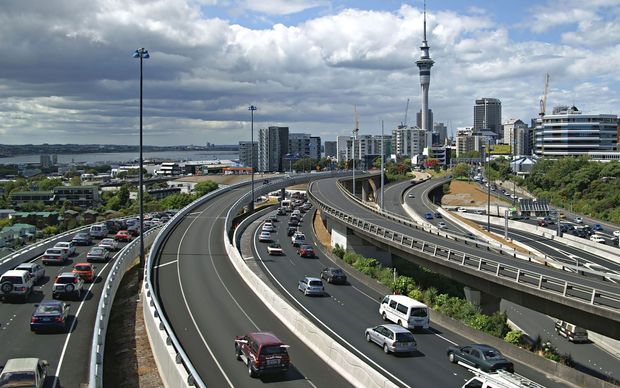More Aucklanders are believed to be working from home after the Covid-19 lockdown, leaving the city’s notoriously packed motorways to flow a little freer.
Photo: 123rf.com
Traffic at key sites at most of the country’s major cities has returned to pre-lockdown levels, but Auckland is the exception.
Data collected from traffic counters between the Queenstown Rd and Hillsborough Rd on and off ramps showed there were about 112,700 vehicles passing through each week, excluding weekend days.
This was 89.7 percent of the previous year’s 125,569 vehicles, according to the New Zealand Transport Agency’s latest statistics from the end of June.
Meanwhile, traffic counters at specific sites in Wellington showed traffic was about 95.9 percent of the previous year, Christchurch at 104.6 percent, Hamilton at 100.2 percent, and Dunedin at 99.7 percent.
This drop was also mirrored in public transport use.
Patronage was 67.5 percent of last year in Auckland, which meant about 45,000 fewer people taking return trips.
This compares to Wellington’s 89.4 percent and Christchurch’s 74.6 percent.
Auckland-based Frog Recruitment founder Jane Kennelly said there was no doubt more people were working from home.
For example, she knew of a large corporate company with only 10 percent of their staff coming into the office every day.
Kennelly said working from home options were highly desired by Auckland job-hunters.
“Particularly for Auckland, one of the things that we’ve talked about for the last number of years with candidates is their dislike of sitting in traffic,” she said.
“That dead time when you’re in peak hour traffic and it takes so long to get to work.”
There was a strong trend of people opting to work closer to home as well – even if their salary dropped.
In her opinion, the Covid-19 lockdown had opened up a “world of opportunity” in working arrangements for both employers and employees.
“[It has shown] that working from home is a very viable option – that money can be saved, time can be saved, family time can be gained and it’s a significant key attribute in their minds when it comes to their work.”
NZTA’s Auckland system manager Andrea Williamson said fewer people heading to the airport was also contributing to the decline.
She was not certain why Auckland traffic did not bounce back like the other main centres, but she hoped traffic volumes stayed down.
“If there’s less cars on the motorway, then there’s a smaller queue which means that everyone is a little bit happier when they get on the motorway.”
The environment also benefited with fewer cars on the road, she said.
Auckland Transport’s metro services manager Stacey van der Putten said university students – who were not currently on campus – usually made up about 14 percent of public transport users.
This had put a dent in the number of people taking public transport, she said.
Greater Auckland director Matt Lowrie said cycleway data showed more people were jumping on their bike, but they weren’t necessarily heading to work.
“In many of the cycleways there is an increase in usage, particularly some of the recreational ones,” he said.
“But the big commuting cycleways, particularly things like the Northwestern, remain down on what they were last year.”
The smaller rumbling of cars on the road could also be detected underground.
GNS science operation specialist Sam Taylor-Offord said data pulled from a seismic sensor about 40 metres underground at Eden Park illustrated the traffic activity.
Noise levels traditionally peaked during the middle of the week and were quieter during the weekend.
This was stable until Covid revved up in March.
“You can see actually the day that we go into level 4 it hits the floor. It stays there until we hit level 3, then it steps back up. When it gets to about level 1, it actually flattens out.”
He said the data showed the sound levels during the week at level 1 were comparable to weekends in February, before alert levels were introduced.

Thanks for sharing. I read many of your blog posts, cool, your blog is very good.
Your point of view caught my eye and was very interesting. Thanks. I have a question for you.
Thanks for sharing. I read many of your blog posts, cool, your blog is very good.
Your article helped me a lot, is there any more related content? Thanks!
Can you be more specific about the content of your article? After reading it, I still have some doubts. Hope you can help me.